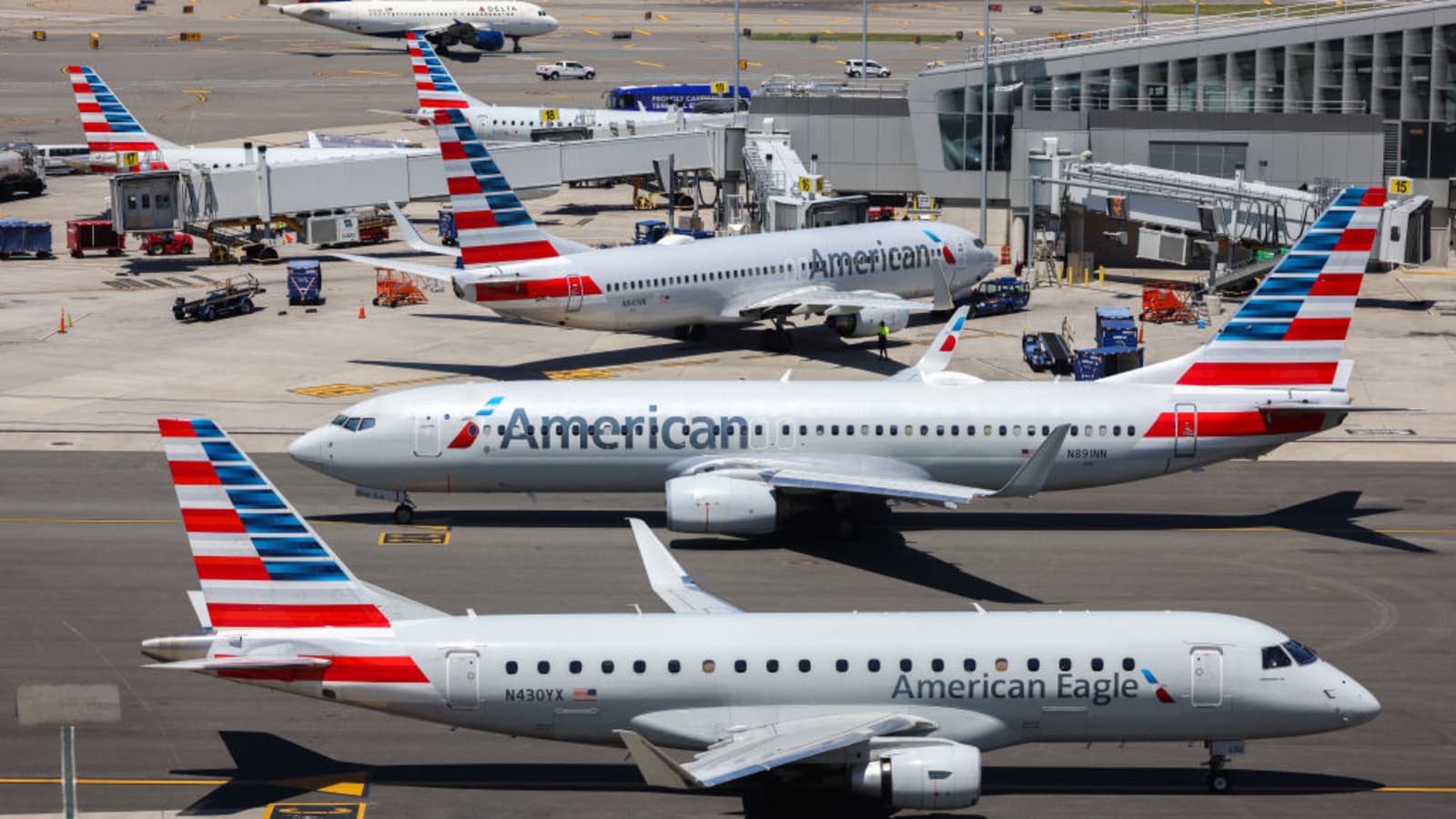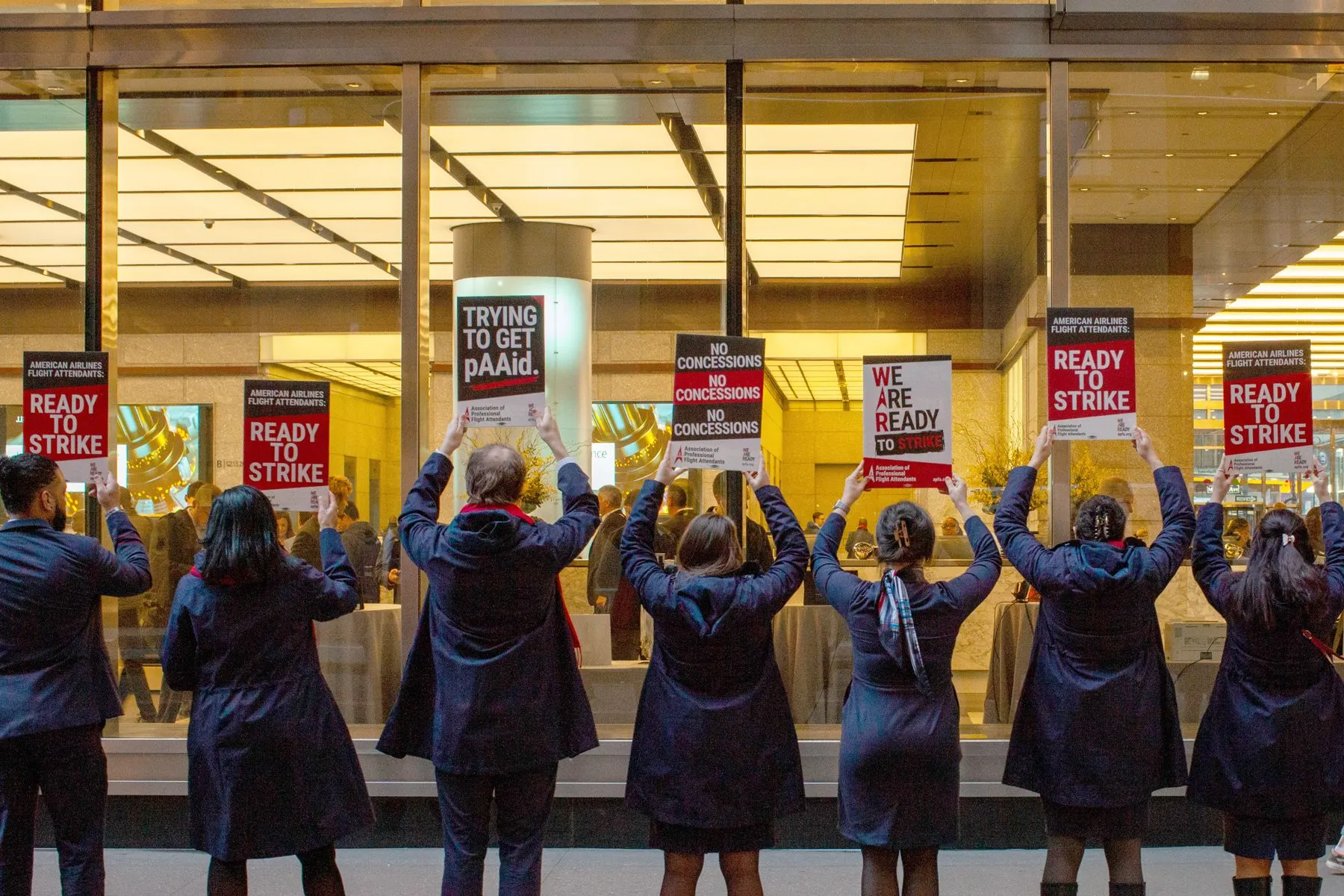American Airlines is currently grappling with significant labor unrest as its unionized flight attendants stand on the brink of a strike. The crux of the issue lies in unsuccessful contract negotiations concerning wage increases, which could have major repercussions for the airline’s operations as it enters a peak travel period.

Unresolved Wage Disputes Spark Tensions
The Association of Professional Flight Attendants (APFA), representing the interests of American Airlines’ flight crew, has expressed considerable dissatisfaction following a series of unproductive negotiations. Despite intensive mediation efforts at the National Mediation Board (NMB) in Washington, D.C., an agreement remains elusive.
“Two weeks of intensive mediation at the National Mediation Board offices in Washington, D.C., failed to produce an agreement with American Airlines,” the union stated on May 31. “We remain apart on the key economics of the deal plus the company’s completely unacceptable demand for scheduling concessions.”

The Stark Reality of Wage Disparities
The union has been vocal about the widening pay gap between the company’s executives and its flight attendants, highlighting a growing disparity in compensation. As of 2023, the CEO of American Airlines, Robert Isom, received a compensation package totaling an eye-watering $31.4 million. This figure starkly contrasts with the starting annual salary of a new flight attendant, which stands at approximately $27,000—barely above the federal poverty level. “Flight Attendants are the only employees at American Airlines who have not had a raise in the past five years,” a union statement from May 8 revealed. “Robert Isom’s compensation package is now 1,162 times that of a new-hire Flight Attendant, corporate greed at its finest.”
Legal and Logistical Challenges to a Strike
While the flight attendants have been urged to prepare for potential strike action, the process is bound by stringent legal restrictions under the Railway Labor Act. They cannot legally strike until they are released by the NMB, followed by a thirty-day cooling-off period.

Implications of a Strike During Peak Travel Season
A strike could not come at a worse time for American Airlines. According to a December report by the International Air Transport Association, global airline travel is expected to hit an all-time high this year, with industry revenues anticipated to reach $964 billion. The forecasted inventory of 40.1 million flights in 2024 suggests a robust recovery exceeding pre-pandemic levels.
The potential strike looms as a dark cloud over American Airlines, not only due to the direct impact on its operations but also because of the broader implications for an industry still grappling with supply chain disruptions. “Supply chain issues continue to impact global trade and business,” the report notes, highlighting the challenges of unexpected maintenance and delays in the delivery of crucial aircraft parts.

A Critical Juncture for American Airlines
As American Airlines navigates through these turbulent times, the outcomes of these negotiations will be closely watched by industry analysts and labor rights advocates alike. The resolution of this conflict could set significant precedents for labor relations and corporate governance within the airline industry. The coming weeks are critical as both the company and its flight attendants brace for possible disruptions that could affect millions of travelers worldwide.










